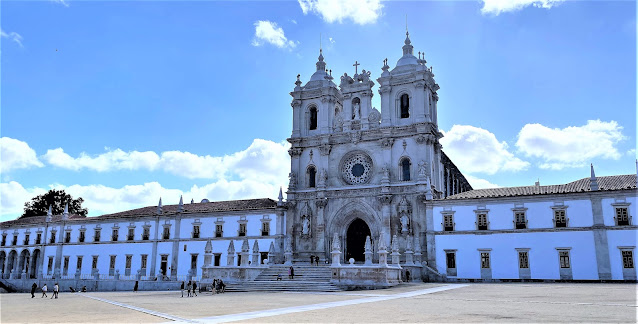June 27, 2022
Our last stop on a very full day was the city of Aveiro. Photos of the city that we saw online were beautiful, and we were excited to visit. However, Aveiro turned out to be the biggest dud of our trip.
First of all, we parked in an underground parking garage that at the end of the day we had a very hard time finding. We would learn more than once on this trip (or maybe we DIDN'T learn) that we need to pay more attention to where we leave our car. We rarely had main streets or grid-like streets to help us navigate. Luckily, I took a photo of the above-ground portion of the parking garage, which saved us in the end.
As we made our way from our parking spot on the hill down to the canals that the city is famous for, we passed some interesting sites. The sign on the left let us know that this city is on the pilgrimage trail to Spain's Santiago de Campostela Cathedral, a place we would visit in a few days.

















